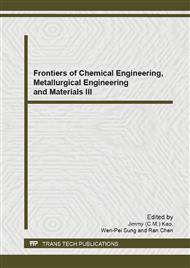p.251
p.255
p.260
p.264
p.268
p.272
p.279
p.284
p.288
Analysis Structure and Composition of Egg Yolk
Abstract:
In this paper, the structure and composition of the egg yolk has guiding effect to the quality problem of the egg yolk, processed foods. Yolks studies three levels, namely, the middle elastic layer, sand viscous layer, the outer layer. An analysis of the composition of the three levels as A result, in addition to vitamin A, egg yolk center among all kinds of trace elements content in the adhesive layer is egg yolk elastic layer and the external sand layer; At the same time, the egg yolk of external sandy layer in magnesium, iron, zinc and calcium content in the middle elastic layer; And constant composition of ash, the highest protein content of egg yolk center viscous layer, cholesterol, fat content of egg yolk highest elastic layer, middle carbohydrate content is the highest egg yolk of external sandy layer.
Info:
Periodical:
Pages:
268-271
Citation:
Online since:
August 2014
Authors:
Keywords:
Price:
Сopyright:
© 2014 Trans Tech Publications Ltd. All Rights Reserved
Share:
Citation:


